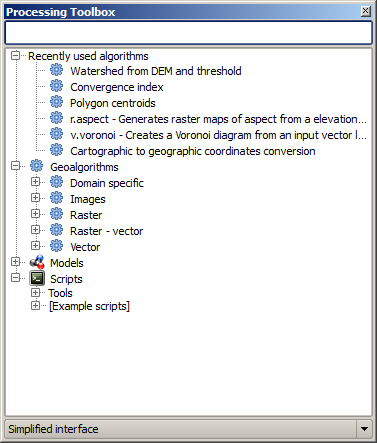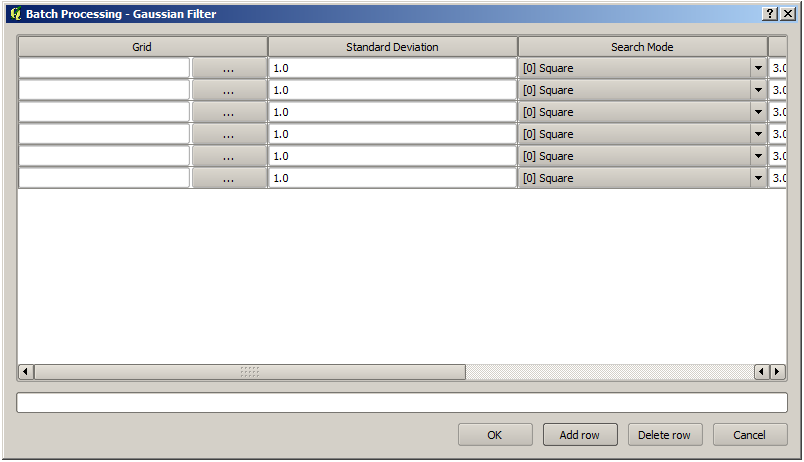.
Introdução¶
This chapter introduces the QGIS processing framework, a geoprocessing environment that can be used to call native and third-party algorithms from QGIS, making your spatial analysis tasks more productive and easy to accomplish.
In the following sections, we will review how to use the graphical elements of this framework and make the most out of each one of them.
There are four basic elements in the framework GUI, which are used to run algorithms for different purposes. Choosing one tool or another will depend on the kind of analysis that is to be performed and the particular characteristics of each user and project. All of them (except for the batch processing interface, which is called from the toolbox, as we will see) can be accessed from the Processing menu item. (You will see more than four entries. The remaining ones are not used to execute algorithms and will be explained later in this chapter.)
A caixa de ferramentas. O elemento principal do GUI, é usado para executar um algoritmo único ou correr um processo batch baseado nesse algoritmo.
Figure Processing 1:
- The graphical modeler. Several algorithms can be combined graphically using the modeler to define a workflow, creating a single process that involves several subprocesses.
Figure Processing 2:
- The history manager. All actions performed using any of the aforementioned elements are stored in a history file and can be later easily reproduced using the history manager.
Figure Processing 3:
A interface de processamento batch. Esta interface permite que possa executar processos batch e automaticamente a execução de um único algoritmo num múltiplo conjunto de dados.
Figure Processing 4:
In the following sections, we will review each one of these elements in detail.




